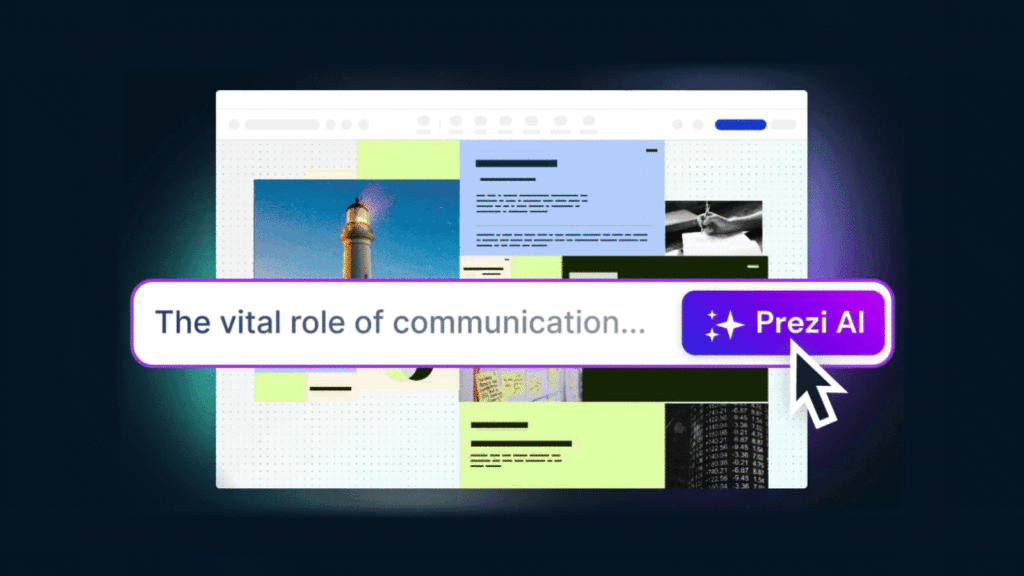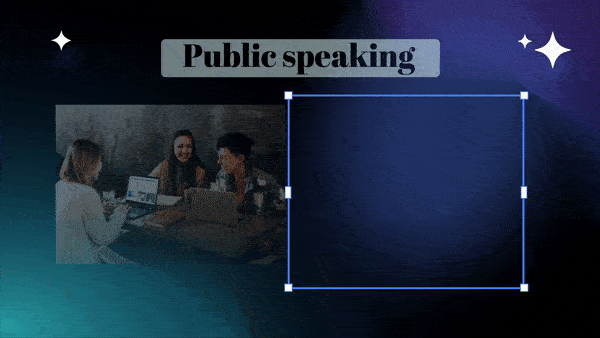Diversity topics for presentations are relevant today more than ever. Whether at the workspace, in schools or communities – having a keen understanding and acceptance of diversity allows for an inclusive and supporting environment. Diversity topics are about acknowledging differences and valuing others’ unique perspectives and experiences.
When you talk about such issues in your presentations, you inform, challenge misconceptions and encourage meaningful conversation. We’ll discuss the significance of cultural diversity topics for presentations, recommend some attention-grabbing themes, and discuss how tools like Prezi can enliven your presentations.

What are diversity topics for presentations?
Diversity topics for presentations refer to topics that address various aspects of human differences. Such as race, ethnicity, gender, sexual orientation, disabilities, socioeconomic status, age, religion, and cultural background. These topics help create an understanding and respectful environment by emphasizing the value that these differences bring to fairness in various settings.
Diversity topics for presentations are more than acknowledging what makes us different. They’re about understanding the impact those differences have on individuals and groups. This kind of understanding is critical to the development of ‘safe’ spaces where everyone feels valued.

Why is choosing diversity topics for presentations important?
Promoting inclusivity at work
By discussing diversity in the workplace, we can break down walls and open up the present work culture to be more accepting. It invites employees to appreciate different point of views. This can improve teamwork, creativity and problem-solving. An inclusive commitment to diversity provides a source of job satisfaction and can increase employee retention.
Educational environments
When teachers use diversity topics for presentations, they give students exposure to different perspectives and provide skills to be able to manoeuvre through multicultural environments. Being exposed to different cultures and points of view allows for the development of empathy and respect towards others. Such knowledge prepares them to contribute positively to diverse communities.
Community engagement
Discussing diversity in community settings can bring people closer to building supportive communities. People are able to come together on common values and realize what the particular struggles of each group are.
Personal growth
Engaging with diversity topics for presentations can broaden our understanding of the world, challenge biases, and contribute to personal development.

Diversity topics for presentations
Cultural diversity: Exploring the richness of different cultures, traditions, and practices, as well as understanding how important cultural competence is.
Gender equality and inclusion: Discussing barriers to gender equality and how organizations can be more inclusive to all gender identities.
Race and ethnicity: Addressing issues like racial and ethnic diversity, systemic racism, and the importance of allyship in combating these discriminations.
LGBTQ+ inclusion: Understanding challenges faced by the LGBTQ+ community and exploring ways to create supportive environments.
Disability awareness: Highlighting the importance of accessibility and inclusivity for people with disabilities.
Generational diversity: Exploring the value of diverse age groups in workplaces and addressing generational differences in perspectives and communication styles.
Socioeconomic diversity: Understanding the impact of socioeconomic status on opportunities and discussing ways to bridge the gaps.
Religious and spiritual diversity: Encouraging respect and understanding for various religious beliefs and practices.
Diversity in leadership: Discussing the importance of diverse leadership in driving organizational success.
Mental health and wellness: Addressing the importance of mental health awareness and creating supportive environments that promote psychological safety.
Intersectionality: Discuss how overlapping social identities create unique modes of discrimination and privilege.
Inclusive language: Exploring the use of language that respects and acknowledges people’s diverse backgrounds, identities, and experiences. This topic covers why inclusive language matters.
Global diversity and multiculturalism: Examining the importance of understanding global perspectives and promoting multiculturalism in an increasingly interconnected world.
Bias and microaggressions: Addressing the subtle but often unintentional expressions of prejudice or discrimination, known as microaggressions, and discussing ways to recognize and prevent them.

What is a good DE&I topic?
What makes a good DE&I topic (Diversity, Equity, and Inclusion) is one that connects with the audience and with the problems at hand in a given context, which will make the content relevant. The following examples demonstrate how well-picked DE&I topics can work with different environments and make an impact:
Unconscious bias in hiring practices
Highly relevant in the workplace, this diversity topic for presentations addresses the ways biases, often unconscious, can influence the recruitment and hiring decisions a manager makes. It’s a way to discuss strategies for mitigating such biases that will result in more fair and inclusive practices for hiring. For example, implementing processes of blind recruitment or using standardized questions.
Cultural competence in the classroom
Cultural competence in educational settings involves sensitivity, knowledge, and effective relationships with people or clients from diverse cultures. A presentation on this topic might describe how educators can infuse their teaching with different perspectives, modify curricula to be more reflective of multicultural experiences, and create valued and understood classroom settings for all students.
Inclusive leadership
This diversity topic for presentations focuses on the qualities and practices of leaders who prioritize equity and inclusion. For instance, how inclusive leaders foster a sense of belonging and make fair decisions while supporting diverse talent development.
Pay equity and transparency
This diversity topic addresses the notion that no matter their gender, race or any other aspect of identity, people should receive the same pay for work of equal value. A presentation on this topic could touch on the value of transparency in pay bands, undertaking periodic audits of pay, and having policies in place to guarantee all employees are fairly rewarded.
How do you show diversity in a presentation?
To successfully showcase diversity topics for presentations, consider these approaches:
- Incorporate diverse perspectives: Include data and case studies that reflect different viewpoints and experiences.
- Use inclusive language: Ensure that your language is respectful and acknowledges all groups. Be sure to avoid using stereotypes and generalizations.
- Visual representation: Use visuals that represent a wide range of cultures, genders, ages, and abilities.
- Interactive elements: Engage your audience with interactive elements such as polls or discussions that encourage diverse voices.
- Highlight diverse voices and stories: Feature stories or testimonials from people who represent various backgrounds. Sharing real-life experiences can humanize the data and make the presentation more relatable.
- Use a diverse panel or guest speakers: If possible, invite guest speakers or panellists from different backgrounds to share their insights during your presentation.
- Acknowledge and address bias: Transparently discuss the presence of biases, both in the presentation content and in general. This demonstrates a commitment to inclusivity and honesty.
- Tailor content to your audience: Consider the unique demographics and needs of your audience when crafting your presentation. Tailoring your content to be relevant and accessible shows respect and increases engagement.

What are the 5 key areas of diversity and inclusivity?
- Race and ethnicity: Focusing on the importance of racial and ethnic inclusivity and addressing related challenges.
- Gender: Promoting gender equality and understanding the spectrum of gender identities.
- Age: Valuing the contributions of all age groups and addressing generational diversity.
- Disability: Ensuring accessibility and inclusivity for people with disabilities.
- Sexual orientation: Creating safe and supportive environments for LGBTQ+ individuals.
Leveraging Prezi for diversity presentations
Prezi is an ideal tool when faced with diversity topics for presentations because of its dynamic, visually engaging, and interactive style that keeps audiences captivated. More often than not, traditional slide-based presentations struggle with engagement. This struggle is even more intense when trying to discuss something as nuanced as diversity, equity, and inclusion. With its unique capabilities, Prezi redefines the way we can bring information about these issues, making it a great platform for raising awareness around diversity and inclusion.

Why Prezi is ideal for diversity topics for presentations:
Non-linear format and interactive features
Compared to traditional slide decks, the non-linear canvas by Prezi enables you to express information in a way that mirrors the interrelatedness of diversity topics. This is particularly useful when unfolding complex themes like intersectionality or the interlocking impacts of different social identities. Being able to draw a connection between different points and highlighting how various aspects of diversity interrelate can make presentations more coherent.
Improved audience engagement through visual storytelling
Prezi’s ability to incorporate multimedia elements like videos, images, and interactive charts helps create immersive experiences that resonate deeply with audiences. For instance, in a discussion of cultural diversity, you can use Prezi to zoom in on specific cultural practices or stories, turning abstract into concrete and immediately relatable. This manner of presenting information through visual stories not only captures the attention of audiences but also helps them retain information.
Prezi AI
Prezi AI improves your diversity presentations by surfacing suggested content — like images, data, and videos that resonate with your diversity topics for presentations. This saves time by populating your slide with on-point, quality content which is both informative and visually compelling. For instance, during an awareness presentation about disability, it can identify inclusive visuals or data that lend support to your message. This makes the presentation informative with visual interest.

Useful Prezi AI features for diversity topics for a presentation
Suggesting content that fits: Prezi AI suggests images, videos, and graphics based on your content. It helps you find visuals that go with your diversity topics and lets your slides be informative while looking good.
Automatic slide layout: Prezi AI makes recommendations about the layout, enhancing the visual flow of the presentation. It figures out if the display is of text, visuals or data and arranges it in the best possible way so that every slide is properly organized and easy to read.
Content optimization: Prezi AI can give tips and make adjustments on the content of your slides. These may include simplifying the text or rephrasing sentences for better comprehension.

Personalization and adaptability
Diversity topics for presentation often require sensitivity and adaptability to the audience’s needs. Prezi allows you to customize your presentations on the go, varying the flow and focus on the basis of reactions and interactions from the audience. Most importantly, this feature allows you to immediately answer questions in cases of discussing rather sensitive topics (mental health, race, or gender) making your dialogue more inclusive and responsive.
Showcasing diverse perspectives
Prezi’s platform is built to highlight diverse perspectives by allowing presenters to layer information and create a multidimensional narrative. This is effective for showing the impact of diversity initiatives across different areas, such as in corporate settings or educational institutions. With Prezi, several perspectives can be seamlessly woven together during a presentation with case studies and testimonials to drive home why and how such topics around diversity are important.
Creating memorable experiences
Because of Prezi’s dynamic features like zoom and pan, presenters can create experiences that stick in the memory of their listeners long after the event is over. Prezi features can be used to draw the audience’s attention to key statistics, quotes, or case studies, making each presentation an informative, engaging journey through the subject matter.
Check out a Prezi presentation example and get inspired to create your own presentation:
For more examples, visit Prezi’s presentation gallery.
Choose Prezi to make your diversity topics for presentations stand out
Using Prezi’s intuitive tools and brilliant AI functions, you can create vibrant and enlightening presentations to make your diversity topics for presentations stand out. Whether you’re presenting to business people, students, or community organizations, Prezi helps presenters communicate their message to the audience in a manner that’s vivid, emphatic, and memorable. Its special features enable you to articulate ideas dynamically so that comprehension should lead to action in building more inclusive and diverse spaces.
For more inspiration, check out our good presentation topics article.
